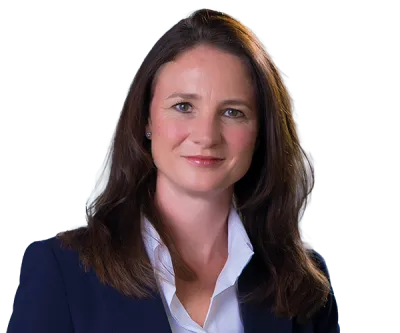CRS 2.0 amendments to the OECD’s Common Reporting Standard
Key issues for Financial Service Providers and how to prepare for 2026
Introduction
The Common Reporting Standard (CRS) was developed by the Organisation for Economic Co-operation and Development (OECD) to promote tax transparency by enabling tax authorities in one jurisdiction to receive information regarding financial accounts held by its residents in another jurisdiction. The information received is then available to the residents’ local tax authority to cross-check against their domestic tax filings to verify accuracy and consistency on the part of the tax payer.
Since its inception in 2014, over 120 countries have committed to implement the CRS under domestic law. Guernsey was amongst the first jurisdictions to adopt CRS and is currently due to exchange information with 112 reportable jurisdictions this year, in respect of 2024 data.
2023 amendments to CRS
The CRS requires financial institutions (FIs) to collect and report information relating to the identity and residence of account holders, as well as the balance and income paid or credited to their accounts. Filings are submitted on an annual basis to the FI’s local tax authority, which then automatically exchanges that information with the tax authority of the jurisdiction in which the account holder is resident. This Automatic Exchange of Information (AEOI) is conducted on the basis of bilateral or multilateral agreements entered into by participating jurisdictions.
Following what the OECD describes as its first comprehensive review of the CRS, the OECD adopted significant amendments to the CRS and its related commentary in August 2022. These amendments were published in finalised form in June 2023 and then further refined with the publication of an update to the OECD’s CRS-related frequently asked questions (FAQs) in May 2024. The amendments are aimed at improving the operation of the CRS, taking into account the practical experience of reporting FIs, as well as the expectations of the tax authorities receiving CRS reports. The OECD were also aware that CRS needed to respond to innovations in the digital and electronic economy, which have given rise to a wide range of investment and financial uses around crypto-assets that are not currently catered for under the existing reporting framework.
Challenges posed by crypto-assets
Unlike traditional financial products, crypto-assets can be transferred and held without the intervention of traditional financial intermediaries, such as banks or finance houses. Often there is no central administrator having full visibility over transactions carried out using crypto-assets or in respect of holdings of crypto-assets. This emerging market has given rise to new intermediaries and service providers, such as crypto-asset exchanges and wallet providers. Existing CRS terminology does not capture these developments and the concern is that the digital and electronic market could be used to facilitate tax evasion, while undermining tax transparency based on the existing rules of CRS and AEOI.
Introducing a new reporting regime, CARF, alongside CRS 2.0
To address these concerns, the OECD launched a new reporting framework known as the Crypto-Asset Reporting Framework or CARF, which is built on the same principles as CRS. In essence, CARF will track transactions in crypto-assets whilst CRS will track holdings. CARF is intended to work alongside the newly amended CRS as two separate, but complementary, reporting regimes. The intention is that obligations under each regime should together avoid the duplication of reportable information.
Guernsey’s commitment to implementing CARF and CRS 2.0
On 10 November 2023, Guernsey, along with the other Crown Dependencies, the UK, the US and 43 participating jurisdictions issued a joint statement indicating their collective engagement to implement CARF in readiness for exchanges to commence by 2027. Those countries that have already adopted the CRS will also be introducing amendments to their respective domestic legislation to accommodate the OECD’s latest changes to the CRS.
The intention in Guernsey is that both CARF and CRS 2.0 will become effective from 1 January 2026.
This briefing note provides a summary of the proposed changes to the CRS, their implications, and practical guidance for FIs. This note should be of interest to those operating in the finance industry and the compliance sector.
A separate note deals with the introduction of CARF in Guernsey - Introducing CARF - the OECD's Crypto-Asset Reporting Framework.
Workstreams associated with amendments to the CRS
The OECD’s review resulted in two main work streams relating to the CRS.
First, amendments are required to bring electronic money products and central bank digital currencies within scope of the CRS. These new digital financial products are seen as credible alternatives to holding money or financial assets in an account that is currently subject to CRS reporting. Changes to the definitions of financial asset and investment entity are aimed at ensuring that crypto-assets and holdings of crypto-assets in custodial and depositary accounts, as well as investment entities that invest in crypto-assets, are all covered by CRS 2.0.
Second, new provisions are introduced into the CRS to improve the due diligence procedures and reporting outcomes under the current CRS, with a view to increasing the usability of information received by tax authorities under CRS 2.0.
Changes in detail
Expanding the scope of financial accounts and financial assets to include digital money products
Certain e-money products, as well as central bank digital currencies representing a digital fiat currency issued by a central bank, can be considered functionally similar to a traditional bank account from the perspective of customers. As such, tax compliance concerns apply to such digital assets in the same way as with bank accounts. Parity of treatment between digital money products and traditional bank accounts is achieved by including in the definition of financial account holdings of these e-money products at a newly expanded definition of depositary institutions. Such holdings will then be reported upon in the same way as is cash held in an account at a physical bank.
Accordingly, CRS 2.0 will include the following changes:
- a new term of specified electronic money product covers digital representations of a single fiat currency that are issued on receipt of funds for the purpose of making payment transactions. They are redeemable at par for the same fiat currency upon request;
- a new term of Central Bank Digital Currency (CBDC) covers any official currency of a jurisdiction, issued in digital form by a central bank;
- the definition of depository institution and its related commentary are amended to include e-money providers that are not already depository institutions under the current definition at which accounts holding specified electronic money products or CBDCs are maintained;
- the definition of depository account is amended to include accounts that hold specified electronic money products and CBDCs for customers, whether they are held in a centralised manner via an issuer or where the digital money can be held without the issuer’s intermediation, in a decentralised manner;
- two new categories of excluded accounts are added so that certain low-risk digital money products do not fall within scope of the CRS. Such excluded accounts include specified electronic money products whose value does not exceed a de-minimis amount, as well as specified electronic money products that are created solely to facilitate a funds transfer, pursuant to the instructions of a customer, and that cannot be used to store value;
- additional wording is included in the definition of non-reporting financial institution to clarify that a central bank is not considered a non-reporting financial institution when it holds CBDCs on behalf of non-financial entities or individuals; and
- amendments to include indirect investments in crypto-assets through derivatives and investment vehicles, ensuring that such holdings are captured under CRS 2.0. Note that while CARF specifically addresses transactions in crypto-assets, CRS 2.0 covers holdings of financial instruments linked to crypto-assets, thereby closing potential reporting gaps.
Implications for financial institutions
FIs will need to update their systems to identify and classify these new asset types of financial accounts. This may require enhancements to client onboarding processes, account classification systems and data collection mechanisms to capture information related to e-money products and CBDCs. For FIs already reporting under the CRS, this expansion may necessitate a review of existing accounts to determine if they fall within the new terminology and expanded definitions.
Additional information, enhanced due diligence and reporting requirements
CRS 2.0 requires additional information to be reported as part of the annual filings of a reporting FI. The intention is to provide tax authorities with more granular information to better assess tax compliance. Key changes include:
Additional information
FIs are now required to collect and report additional information in their annual CRS reports, including:
- the role of controlling persons in relation to entity account holders (e.g., protectors, beneficial owners and trustees);
- whether an account is a joint account and, if so, the number of joint account holders;
- whether an account is a new or pre-existing account, as defined by the CRS, and
- the type of account being reported (e.g., depository, custodial, or other).
Enhanced due diligence
The updated commentary to the CRS 2.0 emphasises that FIs may not rely on self-certifications or documentary evidence if they know, or have reason to know, that such information is incorrect or unreliable. FIs must consider OECD-published guidance on high-risk Citizenship-by-Investment (CBI) and Residence-by-Investment (RBI) schemes when assessing the reliability of self-certifications. This places a greater burden on FIs to scrutinise client-provided information.
New category of non-reporting financial institution1 - qualified non-profit entity2
CRS 2.0 gives jurisdictions the option to recognise non-profit entities that are FIs and currently potentially subject to reporting obligations to be further classified under a new category to be added to the list of non-reporting financial institutions. If adopted by a jurisdiction, this change would introduce a new category which may be of interest to non-profit organisations. The new category of non-reporting financial institution is called a qualified non-profit entity, and will sit alongside the existing category of Active Non-Financial Entities (Active NFEs), which is currently available for eligible charities and non-profit entities that crucially do not meet the criteria to be regarded as FIs and are therefore, by default, Non-Financial Entities (NFEs). Active NFEs do not have reporting obligations themselves and (unlike Passive NFEs) have limited information reported about them in respect of accounts maintained at reporting FIs. It is currently not known whether Guernsey is planning to adopt the new category of qualified non-profit entity as an additional type of non-reporting financial institution, and if so how it would intend to address the requirement under CRS 2.0 for there to be in place appropriate legal and administration mechanisms to verify and confirm that entities claiming to meet the criteria to be treated as qualified non-profit entities are entitled to do so.
Implications for financial institutions
FIs will need to revise their due diligence procedures to incorporate requests for additional information and ensure compliance with the enhanced scrutiny requirements. This may involve updating client questionnaires, training staff on identifying high-risk CBI/RBI schemes, and implementing systems to track the new data elements and monitor changes in OECD guidance. The new carve-out for non-profit FIs, if adopted under Guernsey’s domestic law, will require FIs to establish processes to verify the eligibility of such entities to qualify as a non-reporting financial institutions and to monitor domestic legal and administrative requirements to ensure they can produce evidence of eligibility as required.
Integration of FAQs and updated XML schema
Since CRS was introduced, practical issues that required authoritative intervention came to be dealt with by a working party of the OECD, which released FAQs from time to time. The FAQs provide substantive, practical guidance on common interpretive issues and are not jurisdiction-specific. Topics covered include the treatment of certain account types and the application of due diligence rules in specific scenarios. The OECD has decided to integrate this guidance previously published as FAQs into the updated CRS text and commentary. FAQs not explicitly incorporated into the commentary may still remain valuable as a reference point for dealing with interpretational issues arising out of CRS 2.0.
The OECD released an updated CRS XML schema in October 2024, building on the existing standardised reporting format. The new schema includes fields for the additional information required under CRS 2.0.
Implications for financial institutions
FIs should consider updating their reporting systems and processes to align with the new schema and integrated FAQ guidance to ensure that their data collection and reporting procedures capture the additional information required. This may require engagement with third party service providers that currently assist FIs with CRS reporting.
Implementation timeline and jurisdictional adoption
At the start of the reporting year in Guernsey, the Revenue Service publishes a list of reporting jurisdictions to which CRS reports for the previous year’s data will be transmitted under AEOI. It is anticipated that this practice will continue, so that Guernsey reporting FIs are required to comply with CRS 2.0 requirements with effect from 1 January 2026, leaving it to the Revenue Service to exchange the relevant data with each reporting jurisdiction in accordance with their committed timeframe for implementing CRS 2.0 and exchanging reporting data for the period 2026 and onwards.
FIs operating in multiple jurisdictions must monitor local legislative developments to ensure compliance with varying implementation timelines. This may involve coordinating with local tax authorities and updating internal compliance frameworks to align with jurisdiction-specific requirements in accordance with applicable timelines.
Practical steps for financial institutions
In the run up to 1 January 2026 when CRS 2.0 is due to become effective in Guernsey, FIs should consider taking the following steps:
- Conduct a gap analysis: Review existing CRS compliance processes and systems to identify gaps in current data collection, account classification, and reporting capabilities as compared with the additional and amended requirements under CRS 2.0. This should include assessing whether current systems can capture information related to holdings in e-money products, CBDCs, and the new data elements.
- Update onboarding and due diligence processes: Revise client onboarding questionnaires and due diligence procedures to incorporate the additional information and enhanced scrutiny requirements. Train staff on identifying high-risk CBI/RBI schemes and verifying the reliability of self-certifications.
- Upgrade technology and reporting systems: Invest in system updates to align with the updated CRS XML schema and ensure compatibility with the new reporting requirements. This may involve working with technology vendors or internal IT teams to implement necessary changes to internal systems.
- Engage with tax authorities: Monitor announcements from local tax authorities regarding the adoption of CRS 2.0 and participate in consultations and industry briefings to clarify implementation requirements.
- Communicate with clients: Inform clients about the expanded scope of CRS reporting, particularly regarding digital financial products and joint accounts. Provide guidance on the information they may need to supply, such as updated and expanded self-certifications regarding residence(s) or roles undertaken in relation to underlying entities.
Despite the challenges of adapting to the new requirements, the amendments to the CRS offer opportunities to enhance existing compliance frameworks, leverage existing technology for efficiency, and strengthen relationships with tax authorities and clients through transparent communication.
Conclusion
CRS 2.0, alongside the new CARF regime, together mark a significant step forward in global tax transparency by adapting reporting frameworks to address the rise of digital and electronic financial products and services provided in a rapidly evolving financial landscape.
For those operating in this field, the key to successful compliance lies in proactive preparation. By conducting gap analyses, updating systems and processes, and engaging with clients and tax authorities, FIs can navigate the complexities of the amended CRS and maintain robust compliance programmes. As jurisdictions begin to implement these changes, staying ahead of the curve will be critical for avoiding reporting oversights and potential penalties, thereby reducing operational risks and maintaining the trust and confidence of clients and authorities alike.
Given Guernsey’s mature legal and regulatory system, service providers in the Island are able to adapt their systems to deal with data collection, reporting and AEOI in accordance with evolving internationally recognised standards, whilst maintaining applicable duties of confidentiality, professional standards and financial competitiveness. The wealth of experience on the Island and its long-standing commitment to excellence, has resulted in Guernsey achieving the highest rating of ‘Compliant’, following a three-year review by the Global Forum and achieving a highly successful outcome in December 2024 following evaluation by Moneyval into how institutions in Guernsey combat financial crime. These endorsements compare positively to most other jurisdictions, making Guernsey a well-regulated, co-operative and transparent international finance centre of choice.
1 There are currently nine types of Non-Reporting Financial Institution, i.e. FIs that are excluded from reporting under CRS
2 For those jurisdictions which choose to adopt this additional tenth category of Non-Reporting Financial Institution, a Qualified Non-Profit Entity is an entity that is resident in that jurisdiction that has obtained confirmation from the tax administration or other government authority of that jurisdiction that the entity meets certain conditions, including in relation to its purposes, being exempt from income tax in that jurisdiction and that no private person or noncharitable entity has a proprietary or beneficial interest in its income or assets or can receive income or assets of the entity under applicable laws or the terms of its formation documents.







